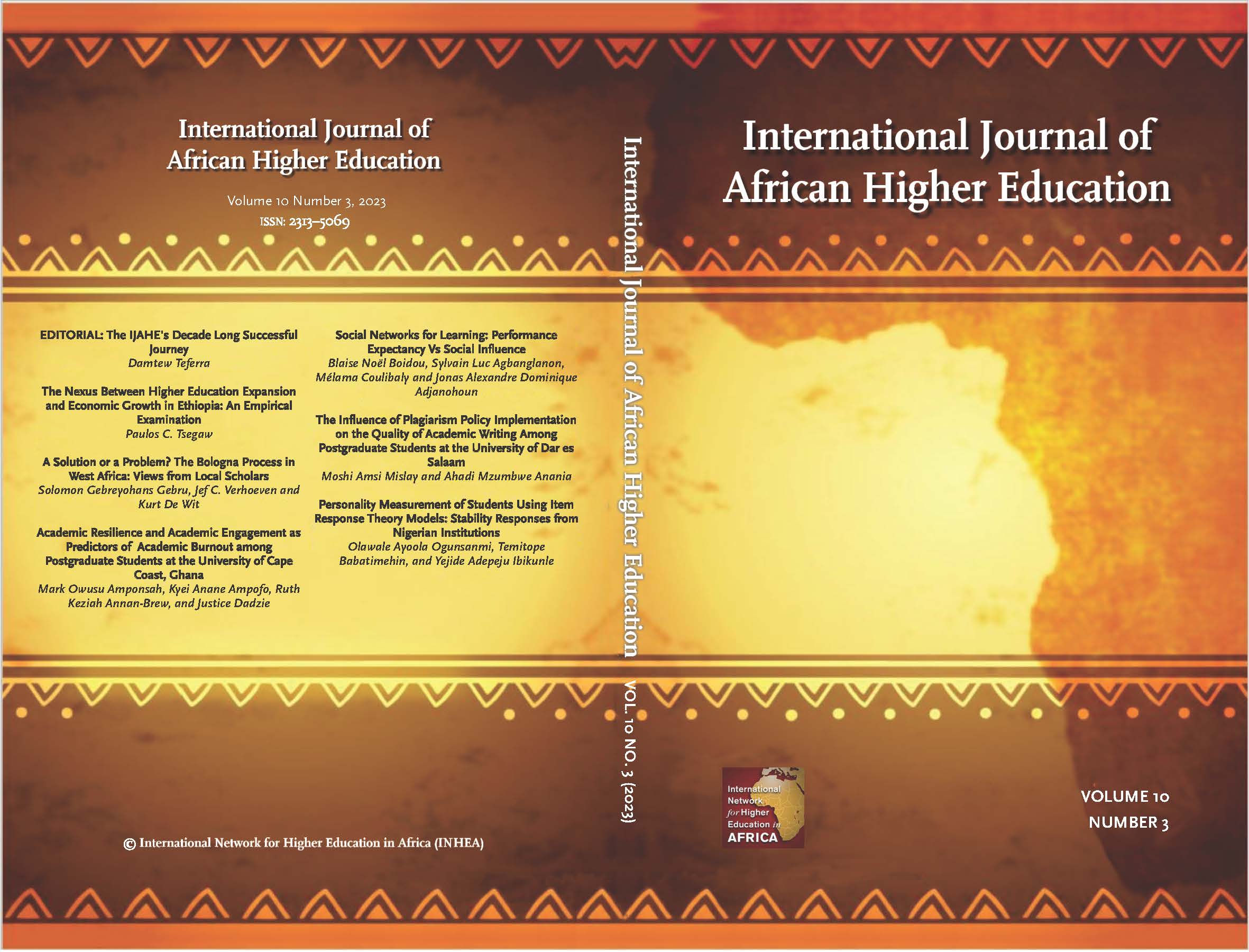The Nexus Between Higher Education Expansion and Economic Growth in Ethiopia: An Empirical Examination
DOI:
https://doi.org/10.6017/ijahe.v10i3.17955Keywords:
Higher education expansion, economic growth, ARDL bound testing model, EthiopiaAbstract
Over the past three decades, Ethiopia’s higher education system has undergone substantial expansion, marked by an increase in the number of universities from two to more than 100 and a surge in student enrollment from 48 000 to more than 400 000. Despite this growth, there is a paucity of research on the relationship between higher education expansion and economic growth, with the few quantitative studies that have been undertaken yielding inconsistent outcomes. This research study embraced endogenous economic growth theory, employed the Autoregressive Distributive Lag (ARDL) bound testing model, and used World Bank data from 1991 to 2021 to explore the relationship between economic growth (measured by GDP per capita) and the expansion of higher education (proxied by gross tertiary enrollment). Contrary to prevailing assumptions, the study uncovered an insignificant association between higher education expansion and economic growth. Unlike other studies, it used qualitative analysis to unearth the potential contributing factors and identified subpar educational quality, limited university autonomy, and constrained academic freedom as critical issues. It is recommended that policymakers in countries undergoing similar higher education expansion should not only focus on increasing the number of students, but also prioritise improving the quality of education, granting greater autonomy to universities, and ensuring academic freedom. These factors are crucial for higher education to effectively contribute to economic growth.
Downloads
Published
How to Cite
Issue
Section
License
Copyright (c) 2024 Paulos C. Tsegaw

This work is licensed under a Creative Commons Attribution-NonCommercial-NoDerivatives 4.0 International License.

